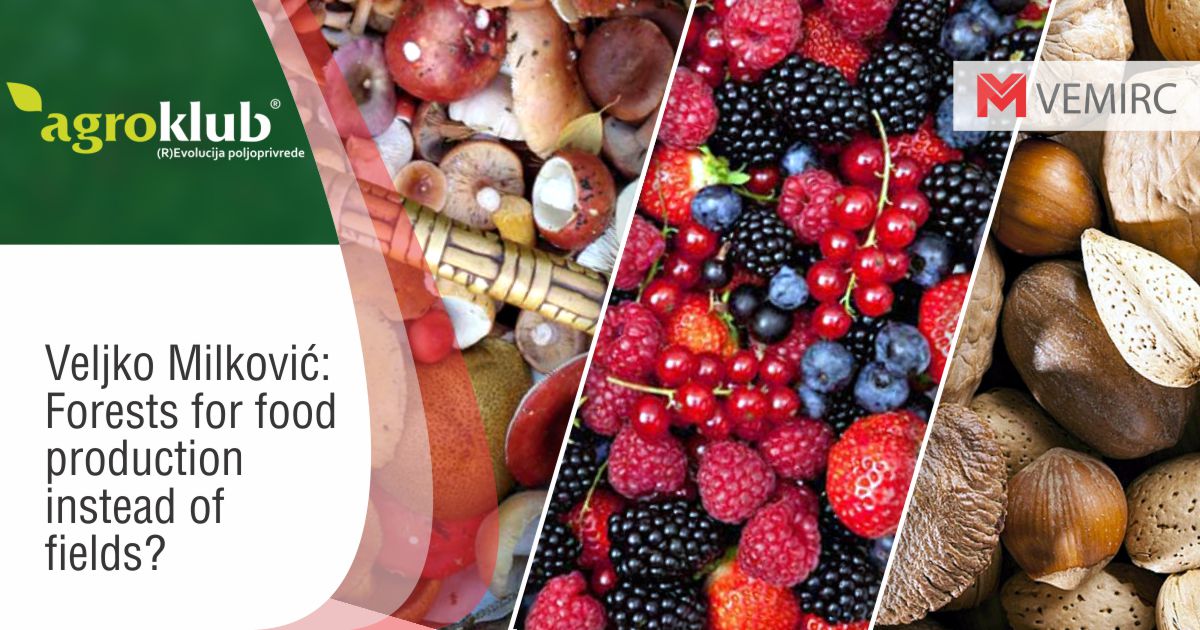
AGROKLUB: Forests for food production instead of fields?

The two-stage mechanical oscillator: Expansion of research in India
September 5, 2015
TELEGRAF: Veljko Milković is a genius whom Serbia must protect
February 13, 2017The Internet portal Agroklub conducted an interview with academician Veljko Milković about his concept of Forests for food production - a substitute for fields. Forests are an inexhaustible source of food, starting with mushrooms, forest fruits and finally animals, says academician Veljko Milković.

The original article is published in Serbian language, so the follownig text is a full translation of the published article:
Famous Novi Sad academic and inventor, Veljko Milković, conceived the project "Forests for food production - a substitute for fields", and is currently writing a book on the subject.
We are witnessing that GMO food has been increasingly promoted lately, which according to the proponents of this food is the only solution for hunger in the world. However, since early childhood I have been a supporter of the idea that trees can give us much more food than arable land and fields.
Forests as a source of food
According to him, forests are an inexhaustible source of food, starting with mushrooms, forest fruits and finally animals. This inventor, a historian by profession, reminds that the prehistoric man in the Paleolithic was a collector of fruits, and that it has been scientifically proven that the people of that time were healthier than modern man, and besides, they were not aggressive.
Proto-humans ate acorns and beech acorns, which are also edible, and many have forgotten that. For example, pigs used to eat beech acorns, and today we feed them corn. In order to get a certain yield of corn, you need to clear the land, make a fertile field and invest money, and the yield will depend on the time. Yield also dictates the market price of meat, which is not low at all.
Return to the old way of eating
Through his project, Veljko Milković proposes the return of the earlier way of feeding people and domestic animals, with significantly more fruits of native trees that are planted once and bear fruit in the long run. These are sweet chestnut, walnut, hazel, almond, apricot, oak, and even maple, as well as all other trees with modest desires, which give healthy fruits.
This procedure would, to some extent, restore the former forests that were relentlessly cleared, to the detriment of the environment. Trees with edible fruits can be planted en masse in places unsuitable for agricultural machinery: river banks, islands, hilly rocky areas, city park and so on. Given that they produce better along forests and fields, the real reason is to fence the fields with native trees as a protective belt against erosion.

As he says, the tame chestnut produces up to 200 kilograms of fruit per tree per year, and its lifespan is over 500 years. A walnut tree produces 4,000 kilograms of fruit during its lifetime - with 1,200 kilograms of fat and 200 kilograms of protein, which no other cultivated plant produces from the same area. Similar yields are achieved by hazel and some species of oak. By the way, all the mentioned fruits, as the interlocutor points out, have a very similar content and energy value as cereals.
He adds that the diet should not overdo it with high-calorie kernels such as walnuts, hazelnuts, almonds, but eat a maximum of ten during the day.
Intensive food production
This project has multiple purposes, because the space between the native trees enables intensive cultivation of vegetables in greenhouses with reflective surfaces (glossy foil or coating), which contributes to faster growth and ripening of fruits. The bed in the greenhouse can be raised with a suitable base.
Also, various types of edible mushrooms can be grown between tree lines, and there are also forest fruits such as wild strawberries, blackberries and raspberries.
Author: Ljiljana Milovanović / Agroklub.rs




